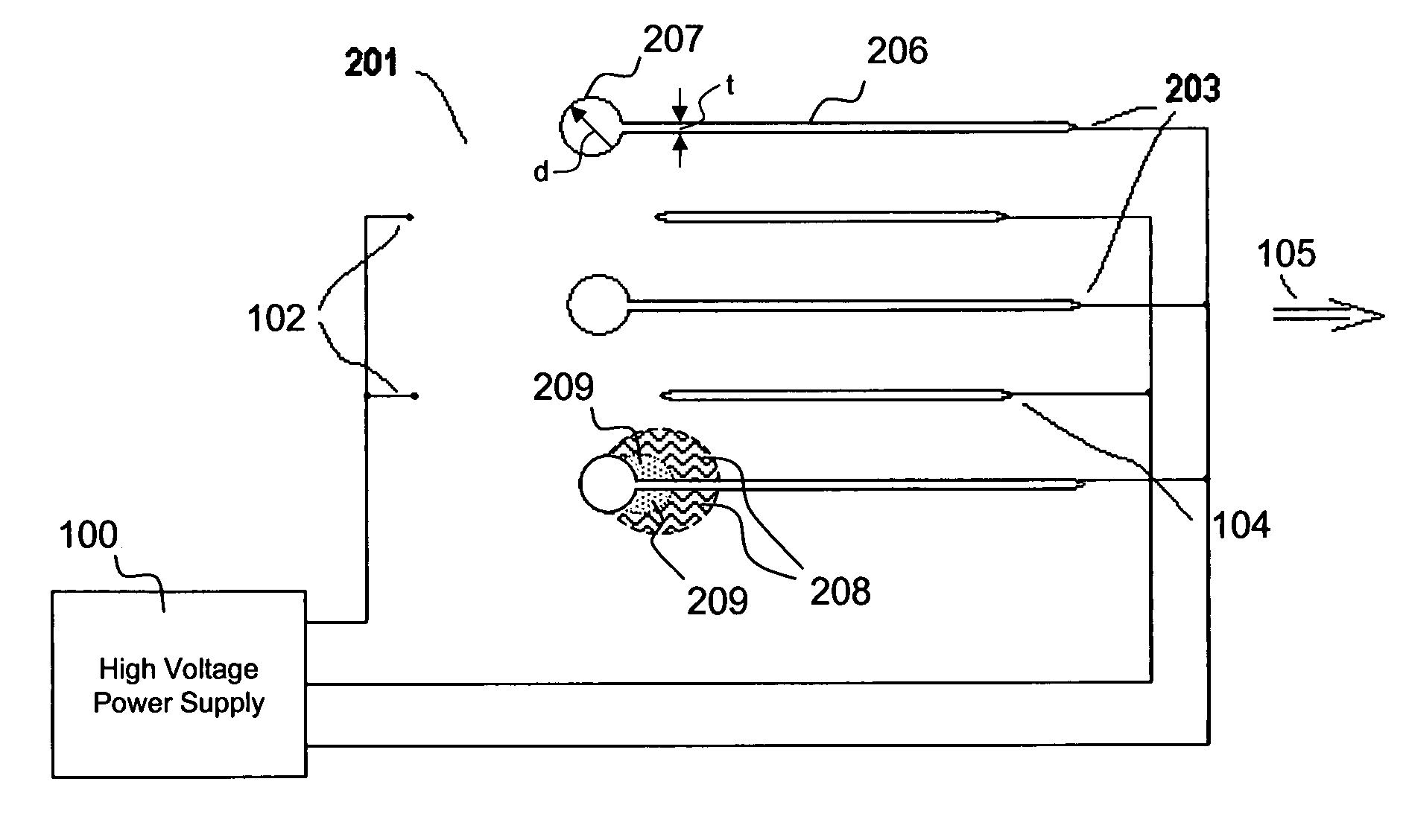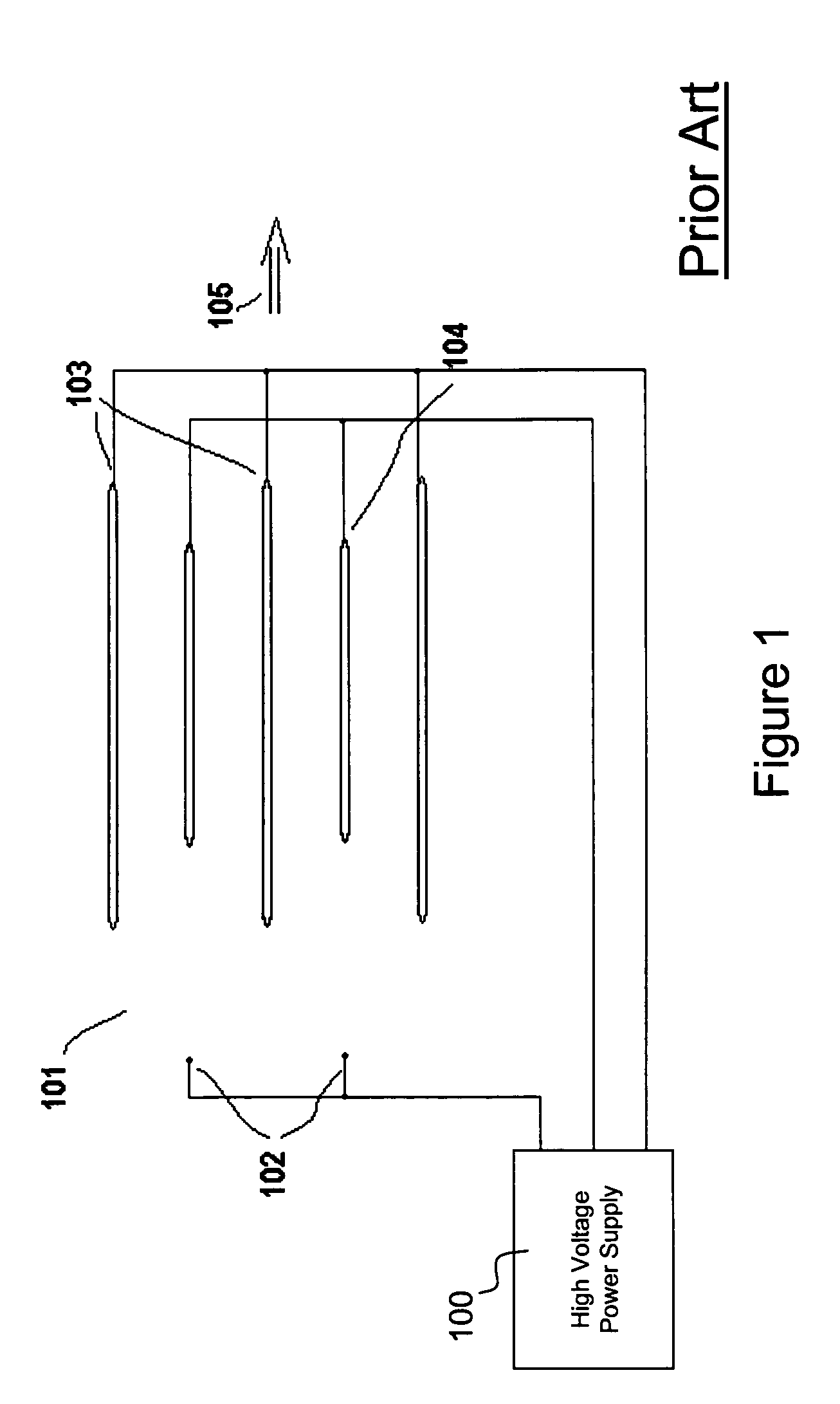Electrostatic air cleaning device
an electrostatic air cleaning and air cleaning technology, applied in the direction of variable capacitors, colloidal chemistry, instruments, etc., can solve the problems of limited air electrical dielectric strength, general failure to consider the movement of charged particulates and their trajectory or path being charged, and relative poor collecting efficiency of electrostatic devices, etc., to achieve the effect of increasing the thickness of the electrode, avoiding airflow disturbance, and minimizing and/or avoiding disturbance of airflow
- Summary
- Abstract
- Description
- Claims
- Application Information
AI Technical Summary
Benefits of technology
Problems solved by technology
Method used
Image
Examples
Embodiment Construction
[0038]FIG. 1 is a schematic drawing of an array of electrodes that are part of an electrostatic air cleaning device according to the prior art. As shown, an electrostatic air cleaning device includes a high voltage power supply 100 connected to an array of electrodes 101 through which a fluid, such as air, is propelled by the action of the electrostatic fields generated by the electrodes, i.e., the corona discharge created by corona electrodes 102 accelerating air toward oppositely charged complementary electrodes such as collecting electrodes 103. The electrodes are connected to a suitable source of a high voltage (e.g., high voltage power supply 100), in the 10 kV to 25 kV range for typical spacing of the electrodes.
[0039]The array of electrodes includes three groups: (i) a subarray of laterally spaced, wire-like corona electrodes 102 (two are shown) which array is longitudinally spaced from (ii) a subarray of laterally spaced, plate-like collecting electrodes 103 (three are shown...
PUM
 Login to View More
Login to View More Abstract
Description
Claims
Application Information
 Login to View More
Login to View More - R&D
- Intellectual Property
- Life Sciences
- Materials
- Tech Scout
- Unparalleled Data Quality
- Higher Quality Content
- 60% Fewer Hallucinations
Browse by: Latest US Patents, China's latest patents, Technical Efficacy Thesaurus, Application Domain, Technology Topic, Popular Technical Reports.
© 2025 PatSnap. All rights reserved.Legal|Privacy policy|Modern Slavery Act Transparency Statement|Sitemap|About US| Contact US: help@patsnap.com



